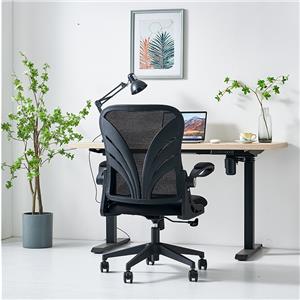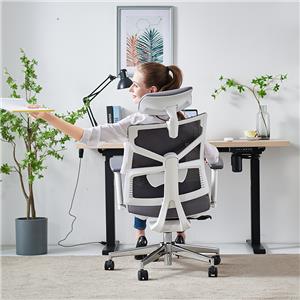For the cervical spine, how important is a right chair
For office workers and gamers, it is normal to be sedentary for a long time, or after get off work, when you return home to lie on the sofa and watch TV or play with your mobile phone, it is a kind of torture for the bones. If you choose the wrong seat, your cervical and lumbar spine will be very injured. As for office chairs, some people have done statistics. If you work for 40 years in your lifetime, you will spend about 80,000 hours sitting on them. We can't choose office chairs, but we can choose the seats at home.
How to choose the seat that suits you?
1. Armrest connection: Check whether the armrest is connected to the back of the chair or the seat cushion. If it is connected to the back of the chair, when you lean back, the armrest can maintain the same angle with the person's back to obtain comfortable arm support. If it is connected to the cushion, when leaning back, the inclination angle of the cushion is inconsistent with the waist of the person, and the arms cannot be placed comfortably. And if the chair has armrests, it can support and share the pressure on the waist when standing up.
2. Cushion angle: Sitting on a chair, after the legs hang down naturally, it is basically 90 degrees to the cushion. Feet should be flat on the floor or mats, with knees slightly lower than hips. Since people vary in height, a chair with adjustable height and seat depth allows people of different heights to sit comfortably.
3. The inclination of the chair back: The pressure on the lumbar spine is different in different postures: when standing, the spine bears 100% of the pressure, lying on the back is the lowest, 25%, followed by side lying, 75%; in various sitting positions, leaning back Sitting at one point has the least pressure on the lumbar spine; the second is sitting with a straight waist; if you hunched your back or leaned forward, the lumbar spine will be under greater pressure. That's why it's important to have an adjustable seat back that locks securely, and the seat can recline as a whole (a position that relieves pressure on the legs).
4. Waist support: It can give enough support to the waist and effectively relieve the pressure on the back. It is best to be able to adjust back and forth, and it is easier to adjust to a comfortable position.
5. Seat height: You can adjust the height of the seat according to your height, so that the line of sight and the computer screen can maintain a suitable angle, which can avoid too much pressure on the cervical spine and indirectly protect the lumbar spine. The spine is an integral structure, and a problem in one part will also affect other parts, so many people with cervical spine problems will also have problems in the lumbar spine. Usually, you can put some hard objects under the computer screen, so that the center of the screen is within 10~15 degrees above and below the line of sight.
6. Base hardness: the base is not as hard as possible. Middle-aged and elderly people and thinner people have less subcutaneous fat in the buttocks, and sitting on a seat that is too hard can easily cause ischial tuberosity cysts. A seat that is too soft, such as a sofa, lacks sufficient support for the lumbar spine when people sit on it, which is not conducive to maintaining the physiological structure of the lumbar spine and spine. Sitting on a harder chair is easier to sit upright. From this perspective, a hard bench Better than a sofa.
7. Headrest function: After working at the desk for a long time, it is necessary to lean back from time to time and stretch the neck. The headrest on the chair can relax the head and neck, and a good computer chair should have the function of adjusting the height and radian of the headrest.
For sedentary people, it is necessary to choose a chair that suits them!




